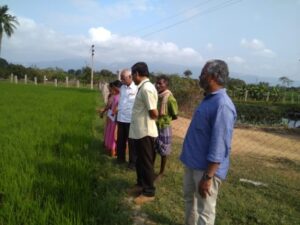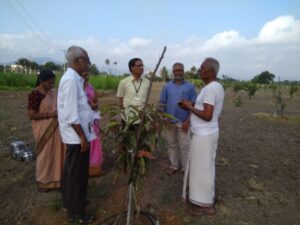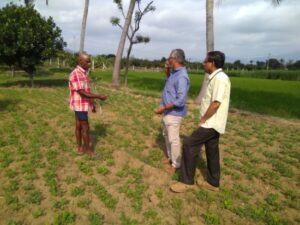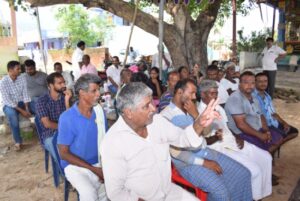

Village Adoption Programme
The village adoption programme was implemented since 1998 by the then Dr. I.V. Subba Rao, Vice-Chancellor with the objective of overall development of the village at 50 centres in the undivided university. Since that time S.V. Agricultural college, Tirupati had been involved in this programme and adopted integrated approach for overall development of these adopted villages. In each village, adoption programme carried by the faculty for a period of three years by identifying their resources, knowledge, felt and unfelt needs and chalkout programmes for the holistic development of village.
Objective of the Programme:
The prime objective of the programme is overall development of the village: The programme works by utilizing Farmer –Scientist linkages in technology transfer. This also enables the adoption of technologies without time lag between technology generation and adoption with technology dissemination losses.
At present S.V. Agricultural College Tirupati adopted Sanambatla village in Chandragiri mandal (from 2018) which 15 km away from S.V. Agricultural College Tirupati.
Specific characters of the village
- Latitude of Sanamblatla village is 13.213383 and longitude is 79.094836
- It is located 56 km toward North from district head quarters, Chittoor.
- The village is surrounded by Tirupati rural mandal towards east, Chandragiri mandal towards west and Vedurukuppam mandal towards south
- Major soil type is red loamy followed by black loamy and red sandy soils
- Soils are low in nitrogen and zinc
- Total irrigated area in this village is 95.5 ha and source is mainly from bore wells/tube wells
- Major crops grown are paddy, groundut, sugarcane and mango
- Agriculture and dairy ae the major occupations of majority of the framers
Cropping pattern of the village: Groundnut – Paddy – fallow
Paddy –Paddy- fallow
Sugarcane – Paddy
Groundnut –fallow/fodder crops
Farming Systems in the village: Agriculture + Dairy
Agriculture + Horticulture
Agriculture + Sericulture
Sericulture + Dairy
Horticulture + Dairy
Problems identified
- Erratic rainfall, depletion of ground water, labour scarcity and high wage rate are the major problems faced by the farmers
- Fluctuating prices fro the produce and lack of storage facilities are the other constraints
- In addition to these pest and disease and nutritional disorders especially zinc deficiency are the other problems
Paddy: stem borer, leaf folder, thrips and blast
sugarcane: ESB, internode borer, scales, white fly, whip smut, rust
Groundnut: late leaf spot, collar rot, rust, thrips
Chili : leaf curl, Cercospora leaf spot
Mango: Hoppers, anthracnose, fruit fly
Activities under taken:
- Group discussions : 7
- Diagnostic field visits: 12
Activities under taken with linkages of line departments:
- Free ayurvedic and eye camps were conducted on 13.11.2018
- Vanamahotsavam was conducted and saplings of forest species were distributed on 11.11.2018
Training programmes organized
| S.No. | Date | Topic | Remarks |
| 1. | 29.3.18 | Low cost technologies in paddy and groundut | |
| 2. | 14.2.19 | Management practices in major crops | |
| 3. | 24.7.19 | Farmer – Scientist Interaction |
Activity photos at a glance





